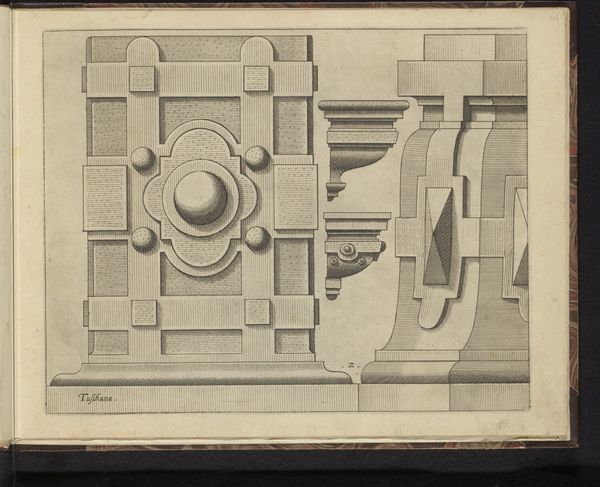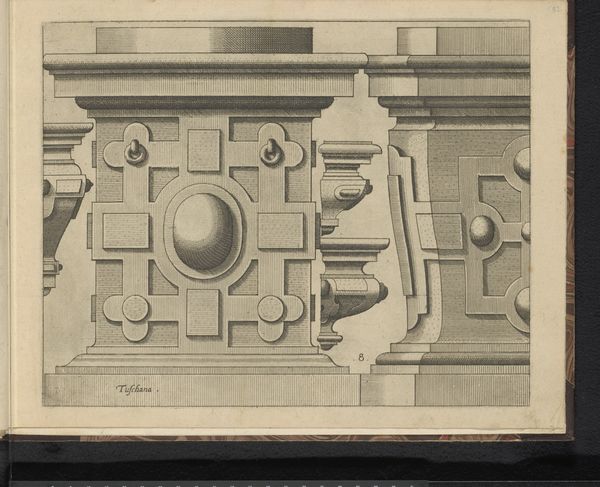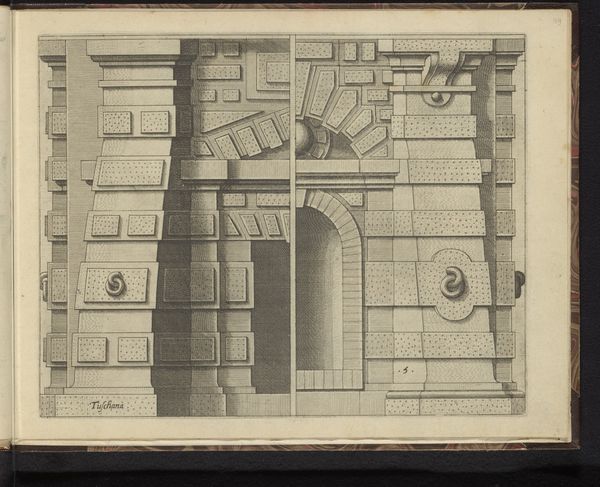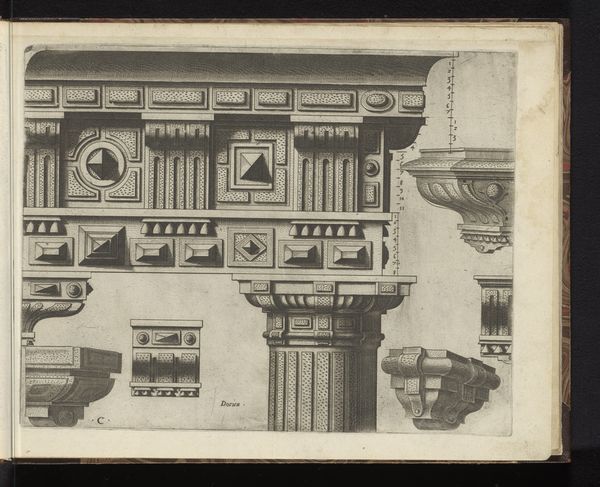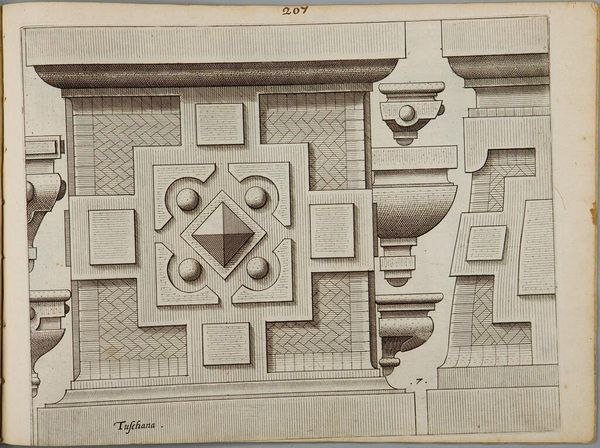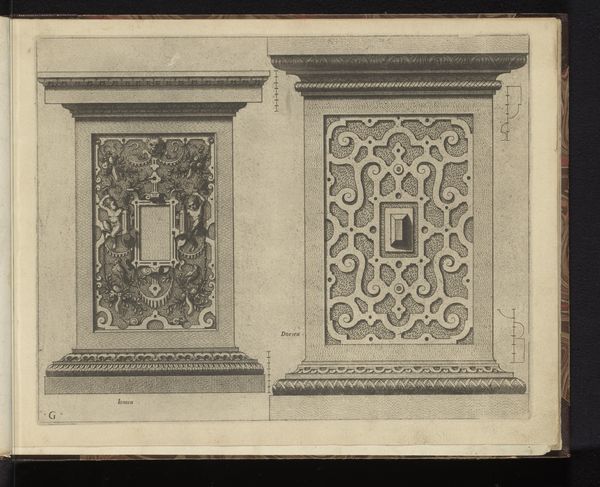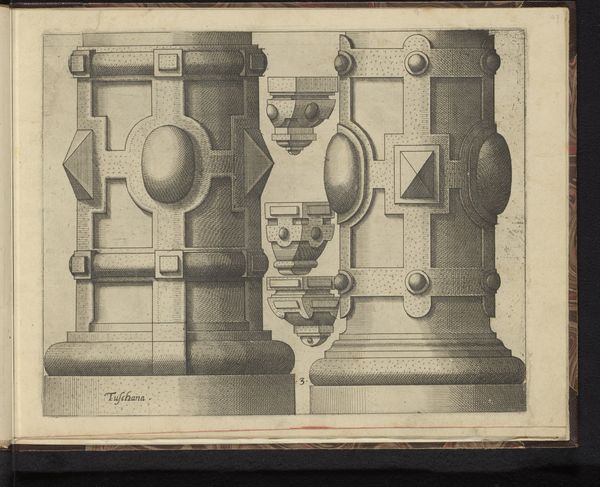
Hele en halve piëdestal en vijf consoles, in de Toscaanse Orde 1578
0:00
0:00
johannesoflucasvandoetechum
Rijksmuseum
drawing, print, paper, engraving, architecture
#
drawing
# print
#
paper
#
11_renaissance
#
geometric
#
engraving
#
architecture
Dimensions: height 235 mm, width 297 mm
Copyright: Rijks Museum: Open Domain
Curator: What a fascinating visual exercise. This is a print titled "Hele en halve piëdestal en vijf consoles, in de Toscaanse Orde," which translates to "Whole and half pedestal and five consoles, in the Tuscan Order," dating back to 1578. It's attributed to Johannes or Lucas van Doetechum and currently resides in the Rijksmuseum collection. The medium combines engraving, drawing, and printmaking on paper, focusing on architectural elements. Editor: Okay, immediately, I see a bunch of shapes. Stiff, architectural shapes. Like a blueprint if blueprints were... heavy. It feels very deliberate, very planned. I’m not feeling a lot of wiggle room here; more like "This. Is. The. Way." Curator: I think your gut reaction speaks to the sociopolitical implications. These formalized architectural plans are part of a larger 16th-century Renaissance move to re-establish "order"— a gesture away from more emotional Gothic structures toward the control of the classical era. The image, especially as a readily reproduced print, underscores the ways in which knowledge and power circulate. Consider the audience: Who could afford this level of planning, and who benefitted from enforcing particular models? Editor: That makes so much sense, because when I look at this design, it's strangely imposing. It wants you to build a Very Serious Building, right? I wonder how that aesthetic filtered down to the, shall we say, “common person's” shed, or home? What impact did that have on vernacular styles and ideas about beauty and proportion? Or to flip it, was this, itself, a representation of established building styles, set out for emulation by master craftsmen and home owners alike? Curator: Right, exactly! Think about who's shaping those perceptions—artists like the van Doetechums helped create and circulate those norms through their work. So, this seemingly “objective” architectural rendering carries a cultural and social load. Editor: Makes you think twice before you slap a random bracket onto a wall, right? Curator: Absolutely, it speaks to the underlying politics in ostensibly neutral forms. Editor: Okay, next time I'm hanging a shelf, I'll think of this image, and probably still hang it crookedly. Curator: Maybe that's an act of resistance? Editor: Now there's an angle I didn't anticipate! Thanks for that.
Comments
No comments
Be the first to comment and join the conversation on the ultimate creative platform.
